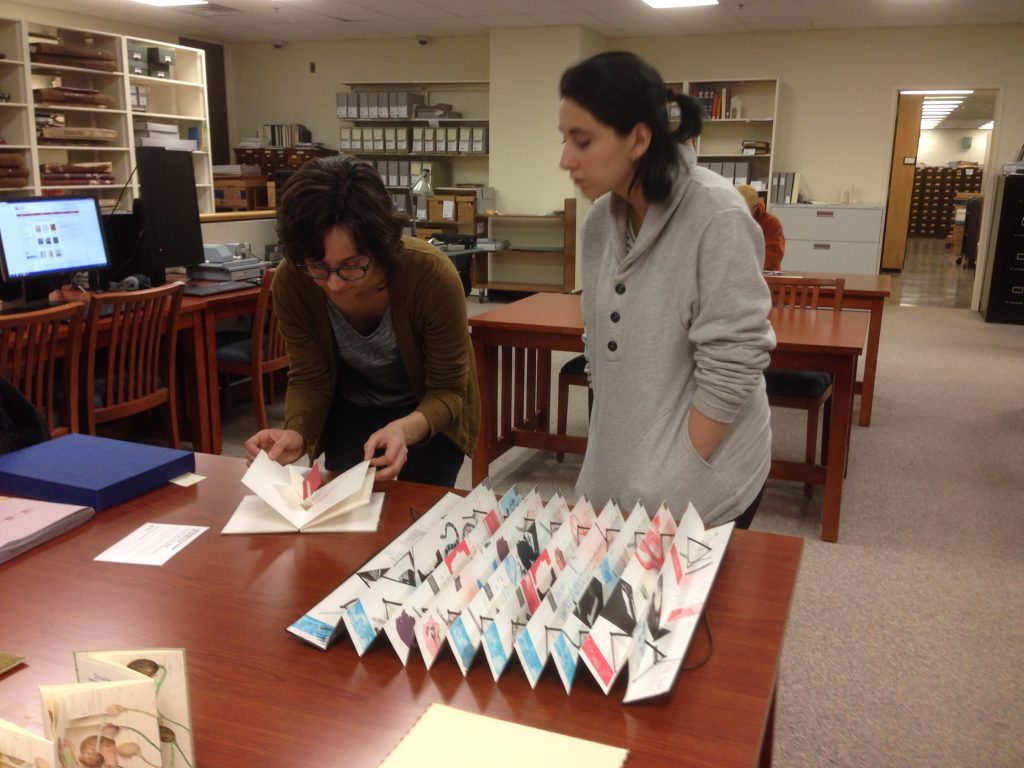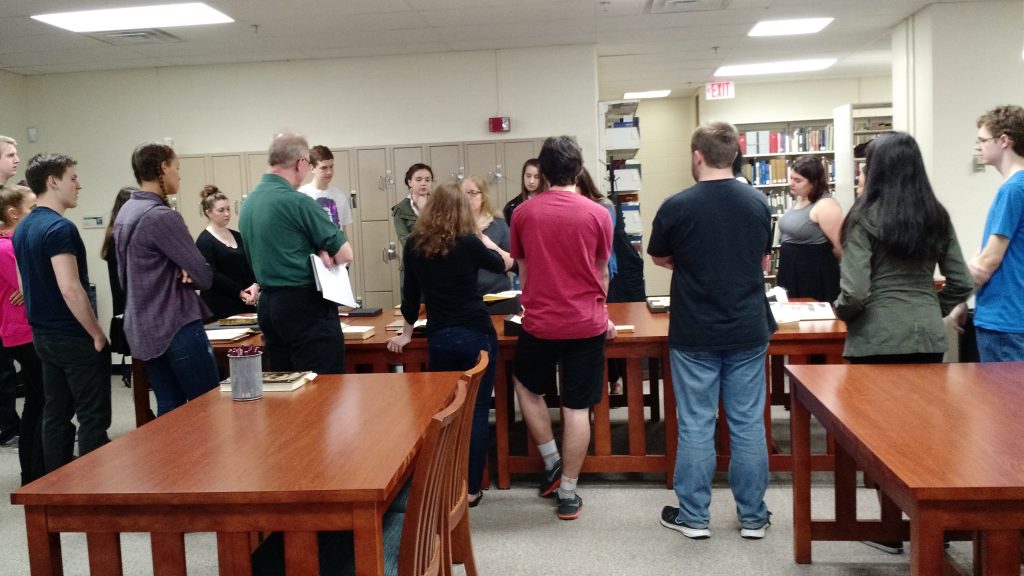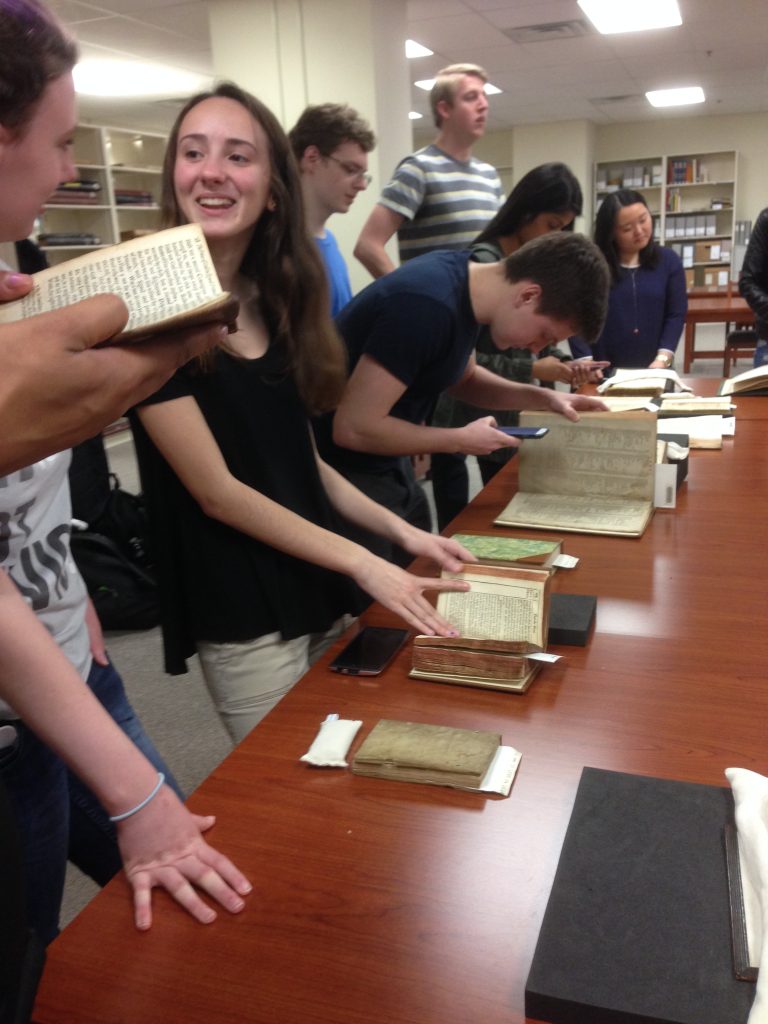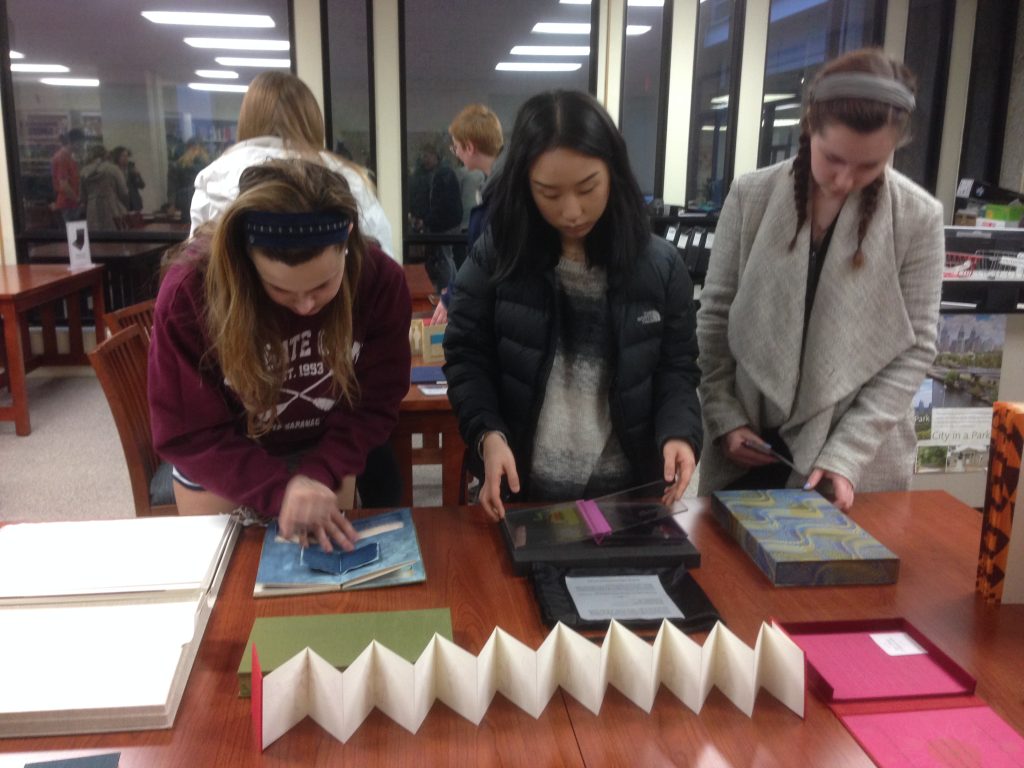One of the ongoing missions of the Special Collections Research Center is to use our collections to enhance the teaching, learning, and research activities in the undergraduate curriculum at Temple. Over the course of spring semester 2016, the SCRC has hosted over twenty five classes representing a variety of departments and programs on campus.
A recent visit by Professor John Dern’s Intellectual Heritage Honors Mosaic Humanities Seminar, a required general education course in the College of Liberal Arts, gave us the opportunity to highlight some treasures from our rare book collections and gave the students an opportunity to see and turn the pages of first editions of Galileo and Mary Wollstonecraft.
The goal of the Seminar is to “introduce students to philosophical, political and scientific texts that are challenging in at least one of several ways: rhetorically, historically or culturally.” In Professor Dern’s section, students read Galileo’s Sidereus Nuncius (Starry Messenger), Mary Wollstonecraft’s A Vindication of the Rights of Women, and Thucydides’ On Justice, Power and Human Nature, among other assigned texts. When the students visited in early April, we pulled Temple’s first editions of Galileo’s final work, Discorsi e Dimostrazioni Matematiche, intorno à due nuoue scienze, printed in 1638 in Leiden, and the first edition of Mary Wollstonecraft’s seminal proto-feminist work, A Vindication of the Rights of Women, printed in London in 1792. Connecting their class reading of Galileo’s most famous work to how his later works appeared in the European marketplace in the early 17th century provides an invaluable lesson in early modern scientific discovery, censorship, and the dissemination of information across the European continent.
In addition to the first edition of Mary Wollstonecraft’s landmark text advocating equal education opportunities and related 18th century texts, the students also engaged with a 15th century manuscript on the lives of the ancient philosophers, a 16th century edition in Greek of the Roman historian Appian, and an 1804 illustrated volume depicting the punishment of criminals in China according to the Qing penal code. Students were encouraged to turn the pages of these texts, ask questions, and even snap pictures with their always-handy smartphones. Exposure to the physical artifacts of the texts they’re studying in class brings the students closer to an understanding of how the texts entered the cultural marketplace, the historical record, and our collective, intellectual heritage.

Another of our late semester class visits provided a different kind of connection to the physical book format for the students. In mid-April, Professor Marianne Dages brought her Tyler School of Art Foundation program class in 2D Foundation Principles to the SCRC to view a selection from our large artists’ books collection. For their own final book-making projects in the class, students were asked to incorporate both a strong use of color and interesting book structures. The selections pulled from the collection provided both examples of strong color technique and unique structures, as well as inspiration for the students’ own work. Just as in the Humanities Seminar, the smartphones were put to good use documenting what they saw for future reference!
Whether a class visit to see the SCRC’s print collection enhances the contextual understanding of class readings or directly influences student work, it does prove that the physical book form is still an integral part of undergraduate teaching and learning at Temple.
— Kimberly Tully, Curator of Rare Books, SCRC


